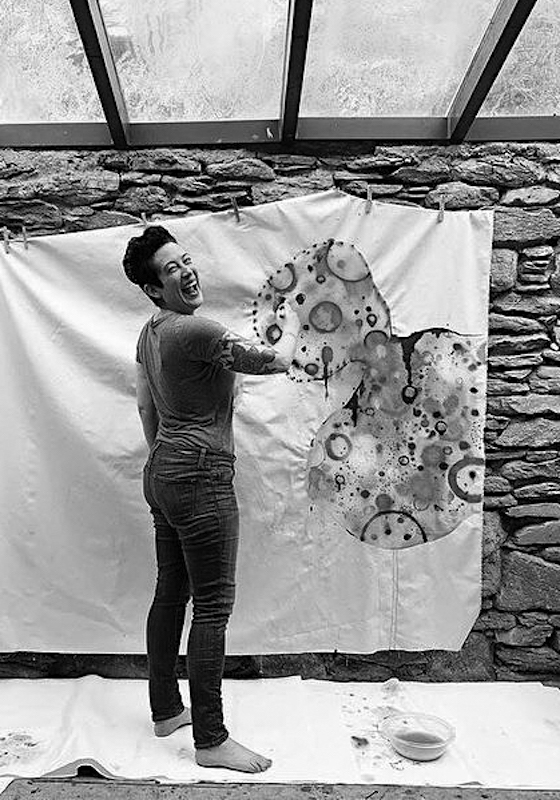
Liz Tran
Liz Tran was born in Eugene, Oregon in 1979. In 2000, Tran moved to Seattle to attend Cornish College of the Arts and graduated in 2002 with a Bachelor of Fine Art in Print Art and Painting. Since her graduation she has worked as a professional artist and has exhibited both nationally and internationally. Tran’s artwork is included in the City of Seattle’s Portable Works Collection and she has been awarded several fellowships and grants; including the Clowes Fellowship for residency at the Vermont Studio Center, the Nellie Cornish Scholarship and Residency at Artstar, Millay Colony for the Arts and The Center for Contemporary Printmaking. Inspired by color, travel and children’s illustrations, Liz’s work often depicts boats, buildings, and trees. Her paintings are often composed of ink, acrylics, graphite, beeswax and Japanese paper. Liz lives in the Northwest with her husband, dog and cat.
Artist Statement:
“Tree Party” is a series of mixed media paintings inspired by living in the Pacific Northwest that uses my surroundings as a platform for creating colorful, imaginative and hopeful work. The paintings are inspired by the local nature and are a reaction against the lengthy, dark and wet winters of Seattle (my hometown). In my basement studio I create works that push back against the constant gray with an explosion of candy colored scenes.
Intuition is my guide as my paintings provide an escape from the regular world. I enter a painting without conscious preconceptions of what the work should be. What emerges are snapshots of an imaginary world. I create environments in which I want to live (or at least spend the winter in).
Over the past eight years I have developed a unique form of mixed media painting. The paintings are composed of ink, acrylic, graphite and layers of Japanese paper, mounted onto panel, and then covered with a layer of beeswax using a hot iron. Often times I will carve into the surface, revealing the layers of painting underneath. Elements from my original prints and sketches are often added during the final stages of “painting”.
